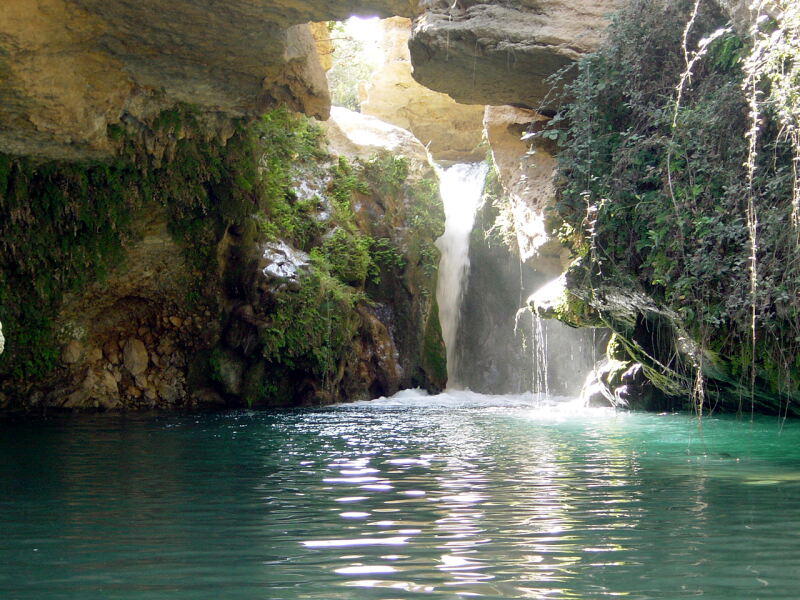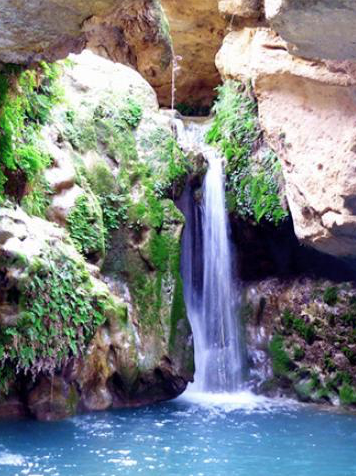Natural Swimming Pools - Salto de Usero
Tuesday, March 29, 2016 @ 12:17 PM

 One thing we all love are swimming pools, some more than others. But here is nothing better than cooling off in a pool under the hot Spanish sun. Community pools don't often do the trick as there are too many people and the water is often too warm! And going to the beach or looking for accessible coves isn't often a possibility. I much prefer swimming in coves than the beach as the water is far more refreshing. But nature usually provides us with alternatives and one good example of this is the Salto del Usero, 3 kilometers south of the town of Bullas, where the Mula River cascades from a height of 4 meters into an Olympic-sized pool that the neighbors call the vaera and is where everyone (or nearly everyone) learns to swim as a child. This is one special community pool, free for all and highly refreshing!
One thing we all love are swimming pools, some more than others. But here is nothing better than cooling off in a pool under the hot Spanish sun. Community pools don't often do the trick as there are too many people and the water is often too warm! And going to the beach or looking for accessible coves isn't often a possibility. I much prefer swimming in coves than the beach as the water is far more refreshing. But nature usually provides us with alternatives and one good example of this is the Salto del Usero, 3 kilometers south of the town of Bullas, where the Mula River cascades from a height of 4 meters into an Olympic-sized pool that the neighbors call the vaera and is where everyone (or nearly everyone) learns to swim as a child. This is one special community pool, free for all and highly refreshing!
In addition, this natural swimming hole is partially covered by a travertine dome (the same sedimentary rock from which most of the monuments and churches of ancient Rome are made), shaped by headwater erosion over thousands of years. Any day is good to dive into this pool, but here the St. John's Eve celebrations are very special. People celebrate the Bajada de la Mora at midnight by joining the other hundreds of people who gather around the water hole formed by the great cascade to meet the "Moorish queen" and be blessed by its miraculous waters. In addition to the swimming hole, the Mula River has had other traditional uses, as evidenced by the 12 flour mills that line its banks. Three of them have been reconverted into rural hotels: the Molino de Arriba, which is next to the Salto del Usero; the Molino de Abajo, and, in the neighboring municipality of Mula, the Molino de Felipe, the only flour mill in the region still in operation.


While water is very important for Bullas, the town owes its fame to its wine (especially that made from the Monastrell grape variety), which has had its own designation of origin since 1994. The Wine Museum is located in a perfectly preserved 19th century wine cellar with brick vaults and large, semi-buried earthenware jars. Here visitors learn the importance of wine for Bullas, both in the past and in the present, and we can buy wines at a reasonable price. The unique wine-flavored cheese, typical of Murcia and which is made from the milk of Murciano-Granadina breed goats that is then submerged in Bullas, Jumilla, or Yecla red wine, can also be purchased at this museum.
You don't have to be registered to leave a comment but it's quicker and easier if you are (and you also can get notified by email when others comment on the post). Please Sign In or Register now.